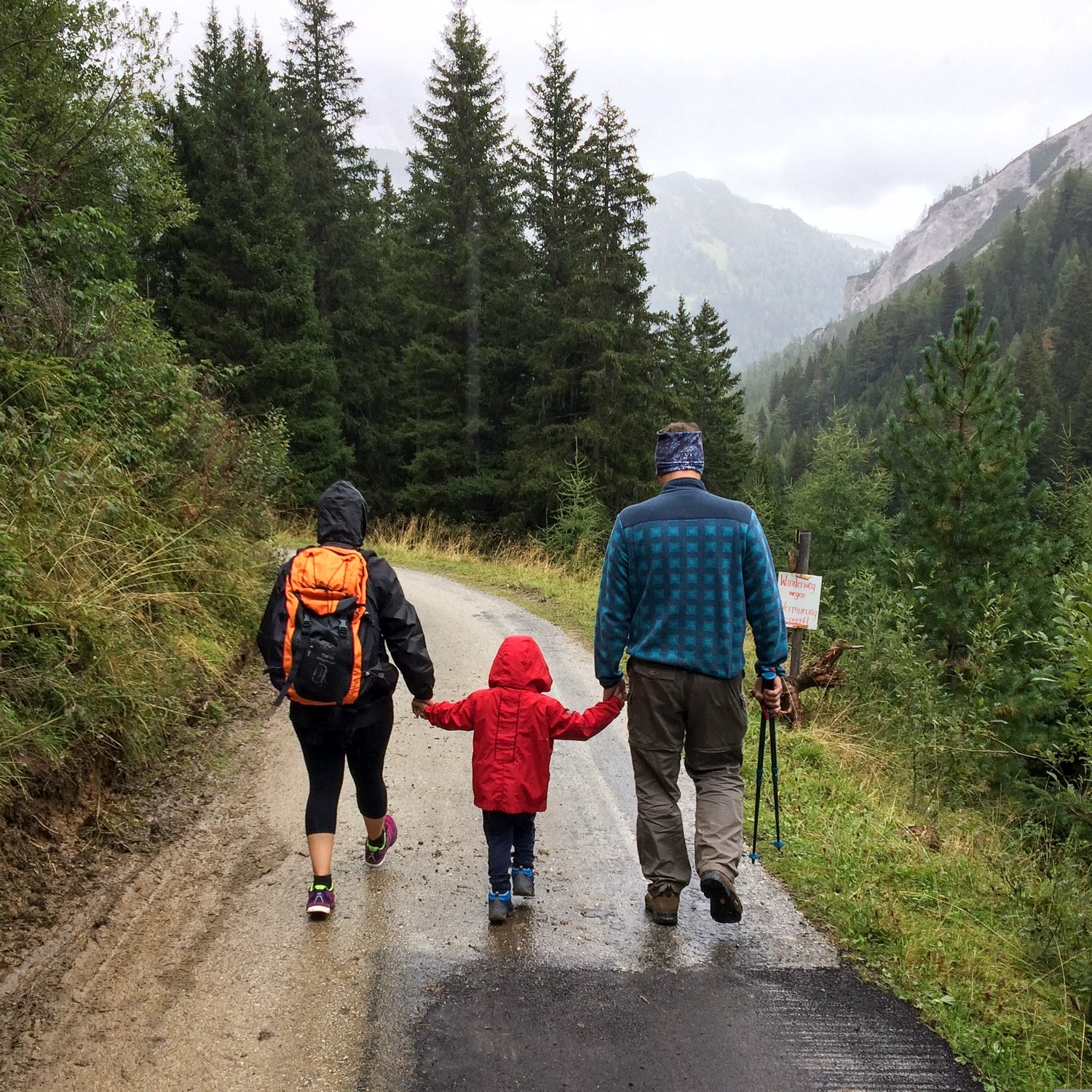Keeping rain off your head or back is simple when you’re on the trail. All you need is a waterproof jacket. Keeping your feet from getting soaked and turning into petri dishes of blisters, infections, and rotting skin while hiking, however, takes some serious maintenance—and the stakes are higher. Soggy feet on a day hike aren’t that big of a deal, but they can quickly ruin a backpacking trip—a fact well known to thru-hikers.
I’ve been on many a backpacking trip but wanted to get some tried-and-true practices from the pros for keeping your dogs dry. I spoke with three thru-hikers who all have past or current records on the notoriously rainy and muggy Appalachian Trail. Jennifer Pharr Davis is about to go on tour with her upcoming book, , which is about the fastest-known-time phenomenon and the popularity of endurance sports in general. She’s also training for the Pinhoti Trail in Alabama and Georgia this year. I also spoke with current unsupported AT record holder while he was running his 4.5-mile commute home from work (he’s training for next month’s ). Finally, I got in touch with Heather Anderson, who has held the unsupported record on both the AT and PCT.
Here are their tips.
Take Multiple Pairs of Socks
Pharr Davis, who runs a guide service called , makes an exception to her minimalist packing rules when it comes to socks. “Wool or wool wicking-blend socks are a must, and they are really the only thing we will ask people to have two of in their pack,” she says. If the sun comes out after a bout of sock-soaking rain, take off your damp pair and let them dry in your pack while your feet recoup in the spare pair.
Anderson also carries more than one pair. “Carry multiples and tuck the socks you aren’t wearing inside your rain jacket after you wring them out to speed the drying process,” she says. “You can also sleep with them inside your sleeping bag if they aren’t too wet.”
Indulge in Micro Breaks
“If it is a really wet trip, any time there is a chance to air out our feet, we take it, whether it’s a snack break or we stop at a shelter,” Pharr Davis says. Even if your feet don’t completely dry, intermittent doses of fresh air throughout the day can really add up. On top of helping to keep your feet from rotting, the breaks are a good time to check for itchy funk and hot spots, which are likely to become blisters from the friction between skin and wet socks.
Give Your Feet Powder Breaks, Too
($21) is worth its weight in, well, gold when you’re hiking in the rain because it creates a friction-free barrier between your skin and damp socks. “Gold Bond Powder is something I always keep in my first-aid kit,” Pharr Davis says. “It is super absorbent, and even if your feet are wet all day, you can constantly put some Gold Bond in your shoes and it will majorly help with foot health.”
Don’t Wear Waterproof Shoes
As counterintuitive as this sounds, all three thru-hikers agreed on eschewing waterproof shoes. “They will keep water out longer, but if moisture gets in over the cuffs, you’re setting yourself up to be miserable,” Pharr Davis says.
“Waterproof anything eventually gets wet and dries very slowly once it does. Instead, opt for a breathable shoe that won’t hold water and dries quickly.” Anderson says. Pharr Davis swears by the combo of wicking socks and breathable shoes, so much so that she used the ($130)—essentially a kayaking shoe—last year for the 1,200-mile Mountains to Sea Trail in North Carolina. McConaughy likes how trail running shoes quickly dry overnight, unlike waterproof boots.
Clean Your Feet Before Bed
“Be sure to keep your feet clean,” says Anderson. “Wash off the dirt and dead skin daily, especially between toes. Using a tea tree oil cleanser can help cut down on bacterial and fungal growth.”
Bring Lube and Antibiotic Foot Cream
Friction is a bigger issue when your feet and socks are wet. The cure can be lubricant. “The wonder ointment I had was a little ($7),” McConaughy says. “It honestly saved my AT through hike. A big issue with blisters is that your skin hardens, and that hardening causes different kinds of issues with rubbing and chafing. Softening it up with Vaseline is a lot healthier.”
Dry Your Socks and Shoes
I know, this one is obvious, but the way you dry your socks can make a big difference. Both Pharr Davis and Anderson advise wringing them out and then hanging them up or stashing them under your jacket if you’re on the move—your body heat will dry socks more quickly. While it is tempting to speed-dry your socks with a little campfire heat, don’t put them too close. “I have melted numerous pairs of socks that way,” Pharr Davis says.
For shoes, McConaughy recommends removing the insoles and loosening up the laces overnight, which boosts air flow and maximizes drying potential.


